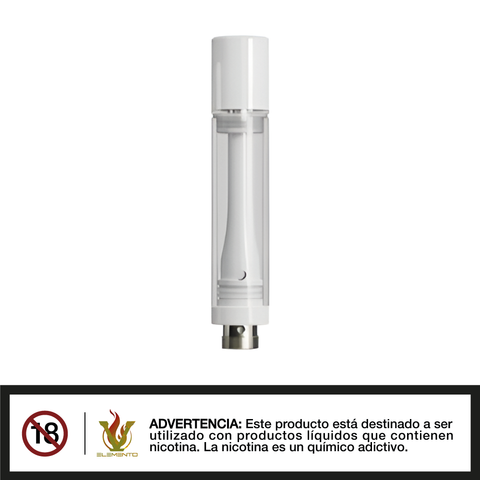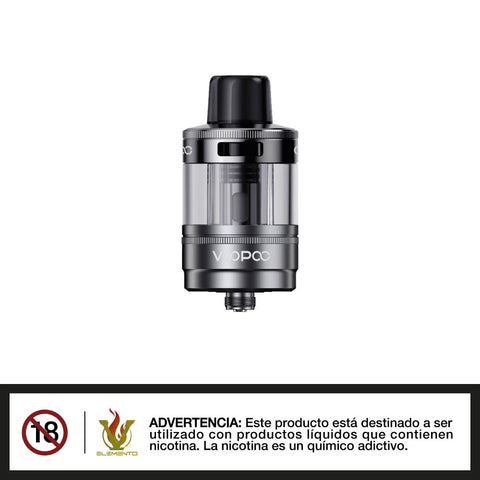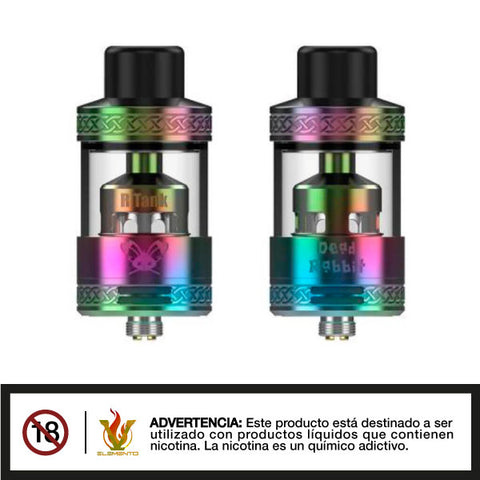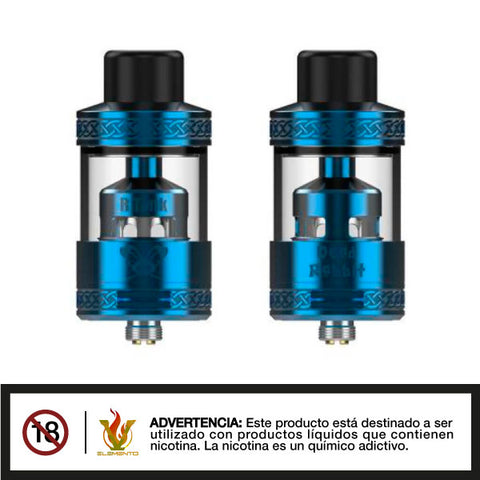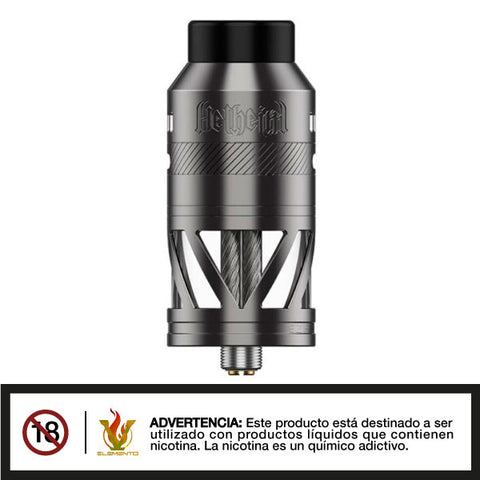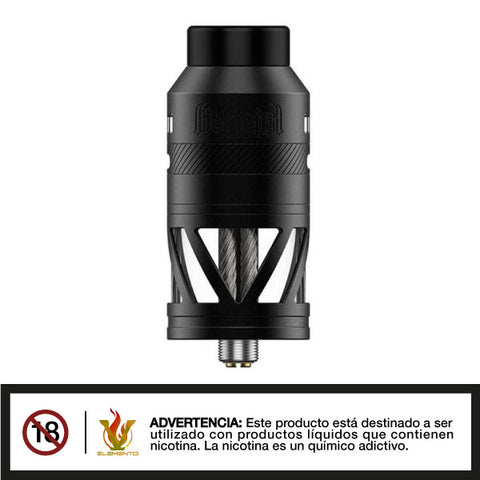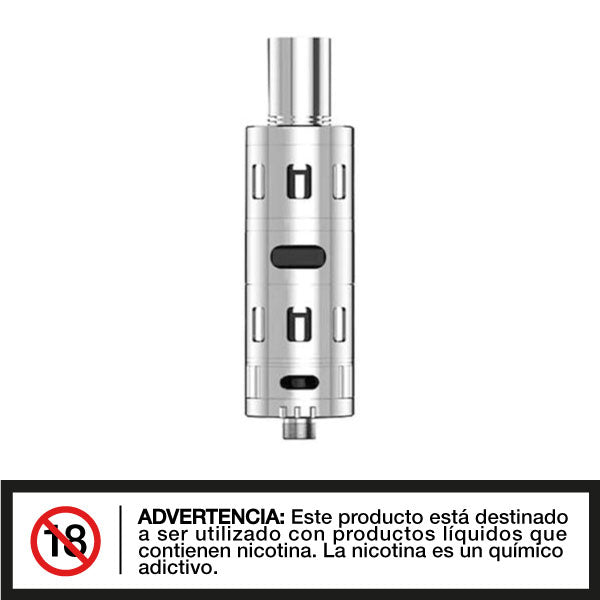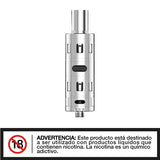Horizon Phantom Micro Sub-ohm - Tank
Horizon presents the 100% authentic Phantom Micro Sub-Ohm Tank. This tank works with the same excellence as Horizon Phantom , except that its micro sub-ohm is smaller. Although its tank is compact, it features a two-chamber liquid storage system that can hold 3.5ml of your favorite liquid. The two-chamber fluid system also features a mechanical cooling design that doubles as a splash-proof and fluid recycling system.
The Phantom Micro Sub-Ohm Tank uses coils that are innovative and exhibit qualities made to enhance your vaping experience. The coils are made of 316 stainless steel wire, combined with 100% Japanese organic cotton to produce massive, milky clouds. The RBA (Rebuildable Atomizer) included with your tank, is beautifully constructed with 304 stainless steel and a glass tank section along with the 510 Stainless Steel Widebore Drip Tip, which features a hollowed-out interior making it perfect for dripping. .
Tank features:
- Dimensions: 22mm (diameter)
- 0.2 ohms at 30 to 70W
- Material: 304 stainless steel, glass tank
- Capacity: 3.5ml
- Two liquid storage chambers
- mechanical cooling system
- liquid recycling system
- splash proof system
- bottom reload
- 316 Stainless Steel BTDC Sub-Ohm Coil Design
- 100% Japanese organic cotton
- Wide Bore 510 Stainless Steel Drip Tip
Package Contents:
- 1x Horizon Phantom Micro Sub-Ohm Tank
- 1x Pre-Installed 316 Stainless Steel BTDC Sub-Ohm Coil (30 to 70W)
- 1x RBA head
Quinto Elemento Vap, the largest Distributor of Vaporizers in Medellín.
Do you have any doubt? Our vape experts are here to help you
Nicotine is an alkaloid derived from ornithine found in plants of the genus Nicotiana sp. The effects of nicotine in man depend on the dose, being able to behave as a stimulant or as a blocker of ganglionic nerve transmission.
How does nicotine work?
Nicotine is absorbed into the bloodstream and reaches the adrenal glands, which are located above the kidneys. These glands release adrenaline, which increases blood pressure, heart rate, and breathing rate. Adrenaline also causes many pleasant sensations, all at the same time.
What other effects does nicotine have on health?
Although nicotine is addictive, most of the health effects are caused by other chemicals found in tobacco. Tobacco use damages each and every organ in the body. Smoking tobacco products can cause lung, mouth, stomach, kidney, and bladder cancer. It can also cause lung diseases — such as coughs — and heart disease, vision problems, and yellowed teeth. Smokeless tobacco products are also dangerous. They can cause mouth cancer and heart and gum disease.
How is nicotine addiction created?
Over time, the nicotine found in tobacco can change the way the brain works. When a person stops using nicotine, the body can become confused and start to feel very sick. This makes it difficult to quit nicotine, even when we know it is harmful. That is called addiction.
Contraindications of Nicotine
Hypersensitivity to nicotine, non-smokers or occasional smokers, children, pregnancy, lactation, recent myocardial infarction, unstable angina pectoris or aggravation of it, Prinzmetal's angina, serious cardiac arrhythmias, cerebrovascular accident, insuf. advanced cardiac.
Warnings and Precautions Nicotine
HTA, stable angina pectoris, enf. cerebrovascular disease occlusive peripheral arterial insuf. heart disease, diabetes mellitus, peptic ulcer, hyperthyroidism, pheochromocytoma, IR or IH, atopic or eczematous dermatitis (transdermal patches). Oral forms caution in: active esophagitis, oral or pharyngeal inflammation, gastritis. Risk of inducing tolerance and physical dependence.
Nicotine in pregnancy
Nicotine has harmful effects on fetal health clearly defined as: low birth weight, increased risk of spontaneous abortion and increased perinatal mortality. It can produce, depending on the dose, alterations in the fetal circulation and in the respiratory movements of the fetus. In the 3rd trimester, nicotine has hemodynamic effects (such as changes in fetal heart rate) that can affect the fetus near delivery.
Nicotine in Lactation
Contraindicated in lactating women. Nicotine is excreted in breast milk in amounts that may affect the nursing infant, even at therapeutic doses. Consequently, during the lactation period, the use of nicotine replacement therapy products should be avoided, as should smoking. If you have not been able to quit smoking, the use of oral forms is preferable to that of patches. The use of nicotine replacement therapy during lactation should only be started after consulting a doctor.
Nicotine Adverse Reactions
Systemic: asthenia, flu syndrome, headache, pain, constipation, diarrhea, dyspepsia, nausea, vomiting, flatulence, hiccups, gastritis, stomatitis, esophagitis, myalgia, arthralgia, sleep disorders, insomnia, dyspnea, tremor, dizziness, dryness mouth, nervousness, increased coughing, pharyngitis, palpitations, increased sweating. Local: transient rash, pruritus, edema, burning and tingling sensations.








